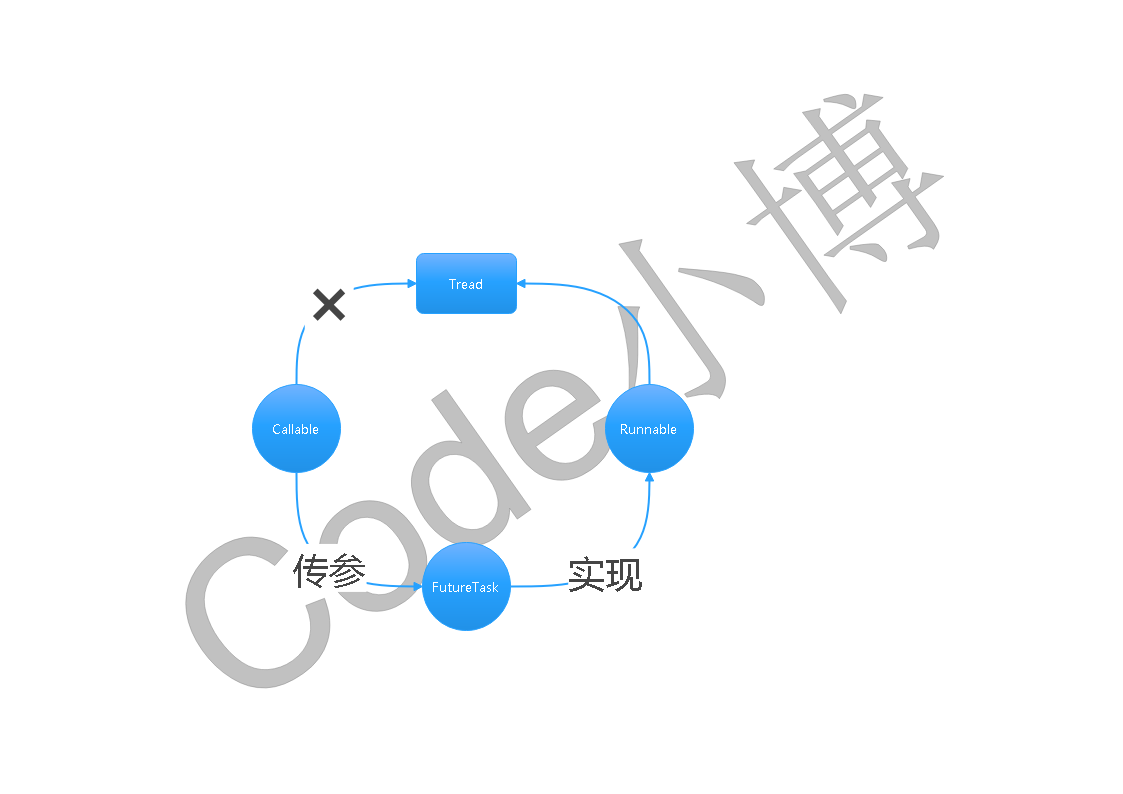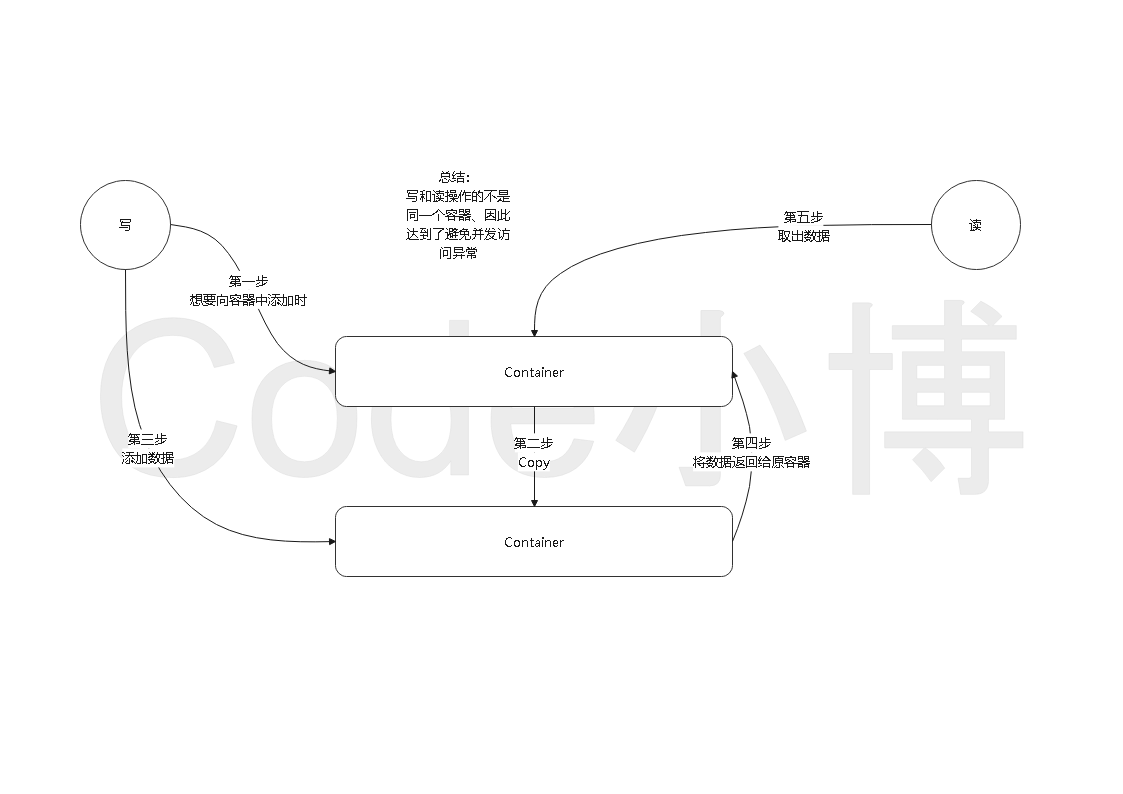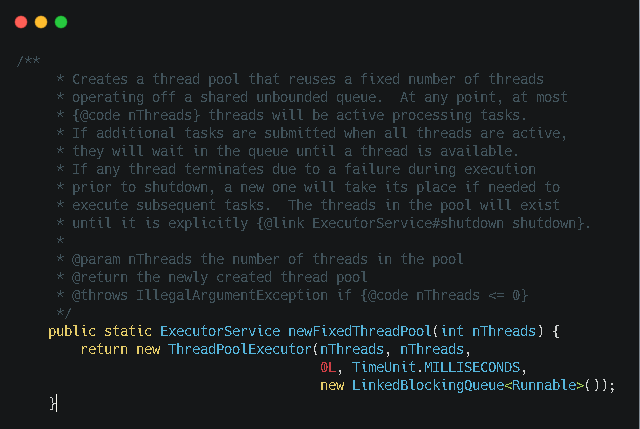并发编程 生产者和消费者模式
一个生产环境中、生产者和消费者在同一时间段内共享同一块缓冲区、生产者负责向缓冲区添加数据、消费者负责从缓冲区取出数据
卖汉堡 汉堡类
1 2 3 4 5 6 7 8 9 10 11 12 13 public class Hamburger private int id; @Override public String toString () return "Hamburger{" + "id=" + id + '}' ; } public Hamburger (int id) this .id = id; } }
容器类
1 2 3 4 5 6 7 8 9 10 11 12 13 14 15 16 17 18 19 20 21 22 23 24 25 26 27 28 29 30 31 32 33 34 35 36 37 38 39 40 41 public class Container public Hamburger[] array = new Hamburger[6 ]; public int index = 0 ; public synchronized void push (Hamburger hamburger) while (index == array.length){ try { this .wait(); } catch (InterruptedException e) { e.printStackTrace(); } } this .notify(); array[index] = hamburger; index++; System.out.println("生产了一个汉堡" + hamburger); } public synchronized Hamburger pop () while (index == 0 ){ try { this .wait(); } catch (InterruptedException e) { e.printStackTrace(); } } this .notify(); index--; System.out.println("取出了一个汉堡" + array[index]); return array[index]; } }
生产者类
1 2 3 4 5 6 7 8 9 10 11 12 13 14 15 16 17 18 19 20 21 public class Producer private Container container; public Producer (Container container) this .container = container; } public synchronized void producer () for (int i = 0 ; i < 30 ; i++){ Hamburger hamburger = new Hamburger(i); this .container.push(hamburger); try { TimeUnit.SECONDS.sleep(1 ); } catch (InterruptedException e) { e.printStackTrace(); } } } }
消费者类
1 2 3 4 5 6 7 8 9 10 11 12 13 14 15 16 17 public class Consumer private Container container; public Consumer (Container container) this .container = container; } public void consumer () for (int i = 0 ; i < 30 ; i++){ this .container.pop(); } try { TimeUnit.SECONDS.sleep(1 ); } catch (InterruptedException e) { e.printStackTrace(); } } }
测试类
1 2 3 4 5 6 7 8 9 10 11 12 13 14 public class Test public static void main (String[] args) Container container = new Container(); Producer producer = new Producer(container); Consumer consumer = new Consumer(container); new Thread(()->{ producer.producer(); }).start(); new Thread(()->{ consumer.consumer(); }).start(); } }
必须使用 while 判断,不能用 if,因为 if 会存在线程虚假唤醒的问题,虚假唤醒就是一些 wait 方法会在除了 notify 的其他情况被唤醒,不是真正的唤醒,使用 while 完成多重检测,避免这一问题
高并发 并发和并行的区别
并发(concurrency):多线程同时操作同一个资源、但并不是真正的同时操作、而是交替操作、单核CPU的情况下、资源按时间段分配给多个线程
高并发标准
QPS:每秒响应的HTTP请求数量
提高系统并发能力的方式 垂直扩展
提升单机的硬件设备
水平扩展
集群
并发编程
一种描述使系统允许多个任务可以在重叠的时间段内执行的设计结构、不是指多个任务在同一时间段内执行、而是指系统具备处理多个任务在同一时间段内同时执行的能力
JUC
JDK提供给的一个工具包、用来帮助开发者完成Java并发编程
进程和线程 java默认线程数为2个
main主线程
java本身无法开启线程、因为java无法操作硬件、只能通过调用本地方法
1 private native void start0 ()
实现多线程的几种方法
继承Thread类
实现Runnable接口和Callable接口的区别
Runnable的run方法没有返回值
1 2 3 4 5 6 7 8 9 10 11 12 13 14 15 16 17 18 19 20 21 22 23 24 public class MyCallable implements Callable <String > @Override public String call () throws Exception System.out.println("这是Callable" ); return "Hello Callable" ; } } public static void main (String[] args) MyCallable myCallable = new MyCallable(); FutureTask<String> future = new FutureTask(myCallable); Thread thread = new Thread(future); thread.start(); try { String value = future.get(); System.out.println(value); } catch (InterruptedException e) { e.printStackTrace(); } catch (ExecutionException e) { e.printStackTrace(); } }
Callable流程分析 1 2 3 4 5 6 7 8 9 public interface Callable <V > V call () throws Exception ; }
1 2 3 4 5 6 public FutureTask (Callable<V> callable) if (callable == null ) throw new NullPointerException(); this .callable = callable; this .state = NEW; }
1 public class FutureTask <V > implements RunnableFuture <V >
1 2 3 4 5 6 7 public interface RunnableFuture <V > extends Runnable , Future <V > void run () }
1 2 3 public Thread (Runnable target) init(null , target, "Thread-" + nextThreadNum(), 0 ); }
sleep和wait
sleep:让当前线程休眠、不会释放锁
synchronized锁
synchronized修饰非静态方法、锁定方法的调用者
synchronized锁与Lock锁的区别
synchronized 自动上锁,自动释放锁,Lock 手动上锁,手动释放锁
Lock锁
使用 Lock 锁、就不能通过 wait 和 notify 来暂停线程和唤醒线程、而应该使用 Condition 的 await 和 signal 来暂停和唤醒线程
ConcurrentModificationException并发访问异常 例
1 2 3 4 5 6 7 8 9 10 11 12 13 14 15 public static void main (String[] args) List list = new ArrayList(); for (int i = 0 ; i < 10 ; i++) { new Thread(()->{ try { TimeUnit.MILLISECONDS.sleep(1 ); } catch (InterruptedException e) { e.printStackTrace(); }finally { list.add("xiaobo" ); System.out.println(list); } }).start(); } }
解决方法 Vector 1 List list = new Vector();
List.add
Collections.synchronizedList 1 List<String> list = Collections.synchronizedList(new ArrayList<>());
JUC:CopyOnWriteArrayList 1 List<String> list = new CopyOnWriteArrayList<>();
CopyOnwrite写时复制、当我们向一个容器中添加元素时、不直接给容器添加、而是现将容器复制一份、向新的容器中添加数据、添加完成后、再将原来的容器引用指向新的容器
JUC 工具类 计数器
当两个线程同时执行时、如果要确保一个线程优先执行、可以使用计时器、让一个线程先执行、再让另一个线程执行
CountDownLatch减法计数器 1 2 3 4 5 6 7 8 9 10 11 12 13 14 15 16 17 18 19 20 public static void main (String[] args) CountDownLatch countDownLatch = new CountDownLatch(100 ); new Thread(()->{ for (int i = 0 ; i < 100 ; i++) { System.out.println("---------------xiaobo" ); countDownLatch.countDown(); } }).start(); try { countDownLatch.await(); } catch (InterruptedException e) { e.printStackTrace(); }finally { new Thread(()->{ for (int i = 0 ; i < 100 ; i++) { System.out.println("wyb---------------" ); } }).start(); } }
new CountDownLatch(100)、coutDown()、await()需要联合使用、必须保证计数器清零、所以coutDown() 的调用次数必须大于等于构造函数的参数值
CyclicBarrier加法计数器 1 2 3 4 5 6 7 8 9 10 11 12 13 14 15 16 17 18 19 public static void main (String[] args) CyclicBarrier cyclicBarrier = new CyclicBarrier(100 ,()->{ System.out.println("执行完毕、允许通过" ); }); for (int i = 0 ; i < 100 ; i++) { final int temp = i; new Thread(() -> { System.out.println("-->" + temp); try { cyclicBarrier.await(); } catch (InterruptedException e) { e.printStackTrace(); } catch (BrokenBarrierException e) { e.printStackTrace(); } }).start(); } }
CyclicBarrier设置一个值、await唤醒其他线程、当await唤醒的线程数达到Cyclicbarrier指定的值时、CyclicBarrier所设置的线程被执行
Semaphore记数信号量
主要使用它来完成限流操作,限制可以访问某些资源的线程数量
1 2 3 4 5 6 7 8 9 10 11 12 13 14 15 16 17 public static void main (String[] args) Semaphore semaphore = new Semaphore(5 ); for (int i = 0 ; i < 20 ; i++) { new Thread(()->{ try { semaphore.acquire(); System.out.println(Thread.currentThread().getName() + "开始访问" ); TimeUnit.SECONDS.sleep(2 ); System.out.println(Thread.currentThread().getName() + "------退出访问" ); } catch (InterruptedException e) { e.printStackTrace(); }finally { semaphore.release(); } }).start(); } }
首先获取信号量、获取到资源才可以执行、执行完毕后需要释放资源、留给下一个线程
读写锁
接口ReadwriteLock、实现类是ReentrantReadWriteLock
1 2 3 4 5 6 7 8 9 10 11 12 13 14 15 16 17 18 19 20 21 22 23 24 25 26 27 28 29 30 31 32 33 34 35 public class Cache private Map<Integer,String> map = new HashMap<>(); private ReadWriteLock readWriteLock = new ReentrantReadWriteLock(); public void write (Integer key,String value) readWriteLock.writeLock().lock(); System.out.println(key + "开始写入" ); map.put(key,value); System.out.println(key + "写入完毕" ); readWriteLock.writeLock().unlock(); } public void read (Integer key) readWriteLock.readLock().lock(); System.out.println(key + "开始读取" ); map.get(key); System.out.println(key + "读取完毕" ); readWriteLock.readLock().unlock(); } } public static void main (String[] args) Cache cache = new Cache(); for (int i = 0 ; i < 5 ; i++) { final int temp = i; new Thread(()->{ cache.write(temp,String.valueOf(temp)); }).start(); } for (int i = 0 ; i < 5 ; i++) { final int temp = i; new Thread(()->{ cache.read(temp); }).start(); } }
线程池
预先创建好一定数量的线程对象、存入缓冲池中、需要用的时候直接从缓冲池中取出、用完之后不要销毁、还回到缓冲池中、为了提高资源的利用率
优势
提高线程的利用率
设计思想
核心池的大小
基本流程
1、线程池初始化的时候创建一定数量的线程对象
底层ThreadPoolExecutor
工具类的Executors 底层都是ThreadPoolExecutor
ThreadPoolExecutor核心参数(7个)
corePoolSize:核心池的大小
4种拒绝策略
AbortPolicy:直接抛出异常
JUC工具类提供的线程池 单例线程池 1 ExecutorService executorService = Executors.newSingleThreadExecutor();
指定数量线程池 1 ExecutorService executorService = Executors.newFixedThreadPool(5 );
缓存线程池 1 ExecutorService executorService = Executors.newCachedThreadPool();
自定义线程池 1 2 3 4 5 6 7 8 9 10 11 12 13 14 15 16 17 18 19 20 21 22 23 24 25 26 27 28 29 30 public static void main (String[] args) ExecutorService executorService = null ; executorService = new ThreadPoolExecutor( 2 , 3 , 1L , TimeUnit.SECONDS, new ArrayBlockingQueue<>(2 ), Executors.defaultThreadFactory(), new ThreadPoolExecutor.AbortPolicy() ); for (int i = 0 ; i < 6 ; i++) { executorService.execute(()->{ try { TimeUnit.SECONDS.sleep(1 ); } catch (InterruptedException e) { e.printStackTrace(); }finally { System.out.println(Thread.currentThread().getName() + "开始办理业务" ); } }); } executorService.shutdown(); }
Volatile关键字
Volatile 是 JVM 提供的轻量级同步机制、可见性、主内存对象线程可见
一个线程执行完任务之后,会把变量存回到主内存中,并且从主内存中读取当前最新的值,如果是一个空的任务,则不会重新读取主内存中的值
递归
函数直接或者间接调用函数本身
需要满足条件
一个父问题可以拆分成若干个子问题,并且若干子问题的结果汇总起来就是父问题的答案
正确的开始、微小的长进、然后持续、嘿、我是小博、带你一起看我目之所及的世界……








